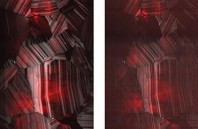Super-resolution microscopy is a valuable tool for biological imaging, and most techniques require fluorescent molecules to “break” the diffraction limit in order to view structures smaller than a wavelength of light. This fluorescence, however, prevents further imaging of the sample using certain contrast mechanisms such as harmonic generation.
Pushing the Limits of Super-resolution Microscopy


 (585) 768-2513
(585) 768-2513
